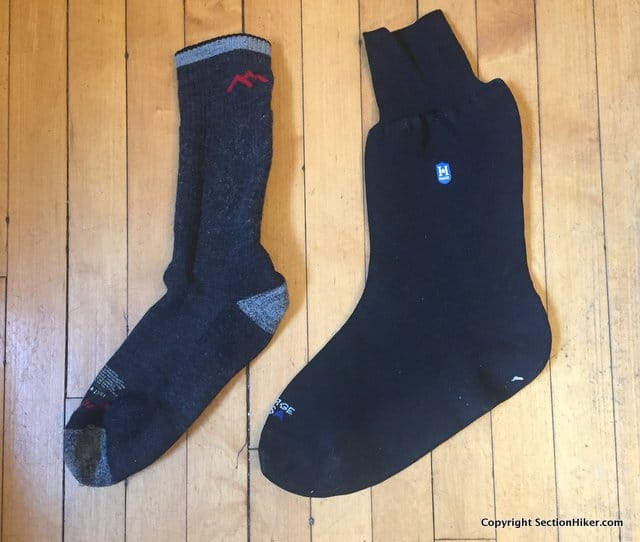When should you switch from trail runners back to waterproof or insulated hiking boots when the temperatures drop in autumn? I get asked this question frequently, and it’s something I wrestle with when the weather changes. The easy answer is when temperatures drop below freezing (32 degrees) during the day or night. However, there are a lot of mitigating factors and transition strategies that you can employ to defer switching from trail runners to boots. Some are more comfortable than others, some less so.
Day Hiking in Autumn
For example, if you’re day hiking, you can usually wear trail runners down to freezing, provided:
- You can keep your shoes and socks dry.
- There’s no wind.
- You don’t stop for breaks often or stand around on cold rock.
- You hike at a fast pace and generate a lot of body heat.
- You eat snacks and stay hydrated.
- You don’t have to wear metallic traction aids like microspikes.
Unless you know your intended route and hiking partners well, it can be difficult to predict these factors. For example, it’s easy to underestimate the amount of water that fallen leaves can hold in autumn, even if it’s not raining, or the increased wind exposure you’ll experience when hiking through forest after the leaves have dropped. The same holds for morning frost or dew, which can make your shoes and socks wet, or the cold that radiates through your trail runners if you must wear a metallic traction aid to hike over slick and icy rock.
You can mitigate these conditions by wearing a waterproof insulated sock from SealSkinz or Showers Pass. The added insulation, wind protection, and waterproofing will keep you reasonably comfortable in your trail runners down to freezing or lower. Another alternative is to purchase a waterproof version of your current trail runners if the manufacturer makes them or a mid-version of the same shoe, which will be a little warmer. Altra, Hoka and other trail runner manufacturers have expanded their product lines to include such models.
Regular hiking or insulated winter boots are usually much warmer than trail runners in borderline weather because they don’t have mesh sides and they have much thicker soles. This results in much greater wind resistance and more foot and sole insulation. I switch from trail runners to lightly insulated winter boots (200 g of insulation) because “waterproof” winter boots with synthetic insulation will also stay warmer if you get them soaked, while the same can’t be said of uninsulated or leather hiking boots.

Backpacking in Autumn
Backpackers must consider the same factors as day hikers, including nighttime temperatures and the weather over several days. It’s one thing if your shoes get wet on a day hike because you can go home and dry them out by the wood stove. But if you’re on a multi-day backpacking trip, wet trail runners will likely freeze at night if temperatures drop below 32 degrees. There’s also less chance to recover from wet shoes during a multi-day trip in freezing weather unless you can hit town and dry your footwear out completely.
There are several ways to mitigate the risk of frozen trail runners. One way is to sleep with them and prevent them from freezing with your body heat. This can be uncomfortable as hell, but it does work. Another way is to rewarm your shoes in the morning by putting a hot water bottle or heat pack in them to melt any ice that’s formed overnight. But they’ll still be cold when you put them on, and your feet will struggle to warm them up.
Surrender to the Inevitable: Boots
If none of these mitigating strategies sound very appealing, it’s because they’re not. If you hike in the colder and wetter weather that often accompanies autumn, you will want to switch to boots if temperatures consistently drop below freezing. While boots aren’t as lightweight or comfortable as trail runners, it is what it is.
More Footwear Frequently Asked Questions
SectionHiker is reader-supported. We only make money if you purchase a product through our affiliate links. Help us continue to test and write unsponsored and independent gear reviews, beginner FAQs, and free hiking guides.
